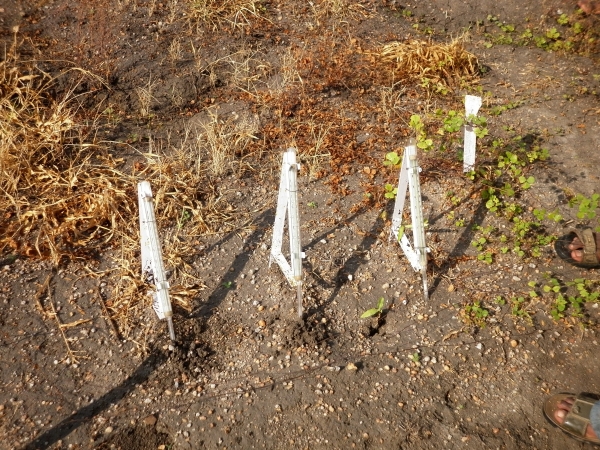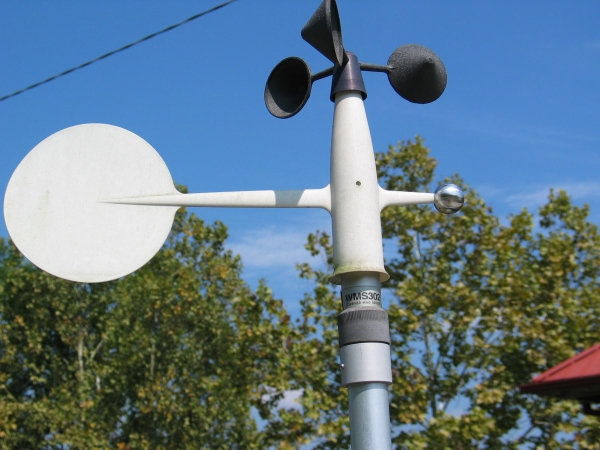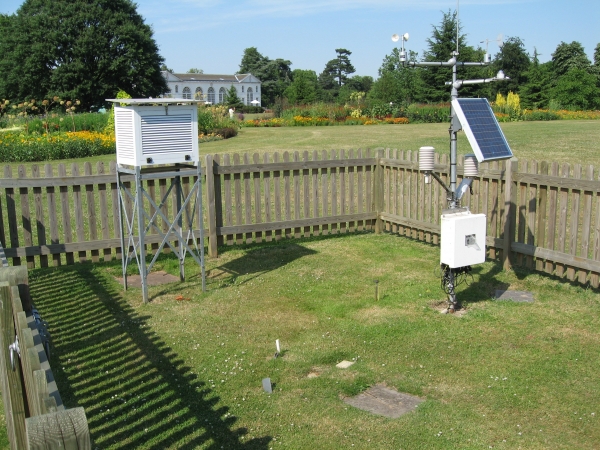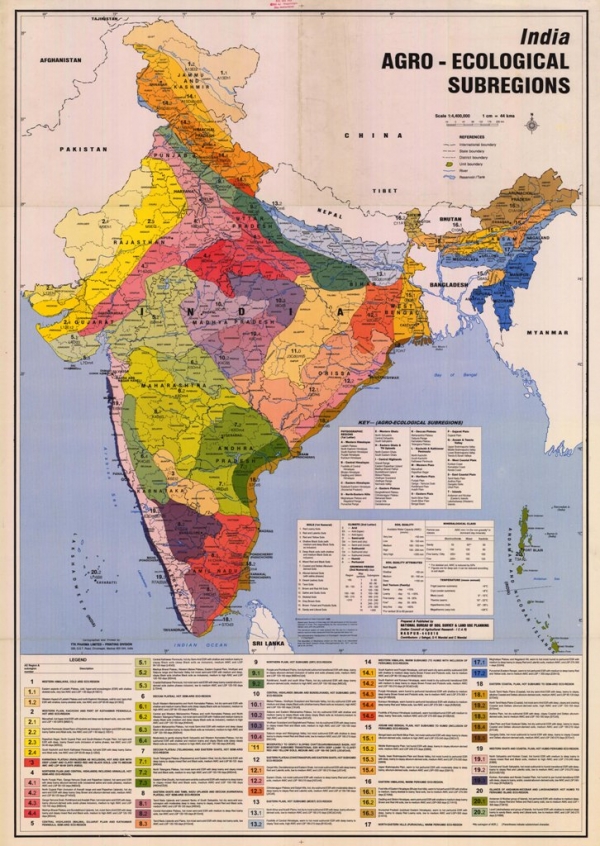Agro meteorology
Physical sciences related to agro meteorology: Meteorology, climatology, hydrology, physics.
Meteorology:A study in meteorology is mainly concerned with the formation of rain, dew, snow, and water vapour and processes of evaporation, condensation, precipitation etc.
Climatology: It involves the studies of climatic elements such as rainfall temperature and evapotranspiration which are important for farm operations and agricultural production.
Meteorology is the study of physical processes in the atmosphere that produce weather, whereas climatology is the study of the totality of weather.
Hydrology: It deals with the process of run-off, percolation, storage of ground water and soil water, irrigation and drainage of agricultural lands etc.
Physics of the air and soil forms the foundation of agro meteorology.
Agro-meteorology is the applied branch of meteorology.
Definitions Agro meteorology:
• Agro meteorology is a science investigating the meteorological, climatological and hydrological conditions which are significant for agriculture owing to their interactions with the objects and processes of agricultural production.
• It is the study of those aspects of meteorology which have direct relevance of agriculture.
• Agro meteorology puts the science of meteorology to the service of agriculture to help the sensible use of land, accelerate production of food and to avoid the irreversible abuse of land resources (Smith, 1970).
• Agro meteorology is defined as a branch of meteorology which investigates the relationship of plants and animals to the physical environment.
• Agro meteorology is defined as the study of responses of living organisms to the physical environment (water, air, soil). The living organisms are cultivated plants, livestock, insects and micro organisms.
The objective of Agro meteorology: -
1. To discover and define the meteorological, climatological and hydrological problems which are relevant to agricultural production.
2. Apply this knowledge of the atmosphere and soil to practical agricultural use.
3. It attempts to enhance agricultural production by controlling physical environment.
4. To forecast weather and crop yield accurately.
The control of physical environment consist of prevailing frost, drought, growing wind breaks, adopting flood control measures, modifying and controlling temperature and humidity in crop fields and animal houses.
Relationship of Agro meteorology with agricultural sciences: -
Agro meteorological study is the important part of individual agricultural sciences, because the growth and development of plants is basically dependent upon the physical conditions of the environment in which they live and grow. So, all the agricultural sciences are incomplete without the incorporation of the information on weather and climatic effects on crops and livestock.
• Agronomist and horticulturalist: - Need the information on weather and climate which influencing growth, development and yield of their crops. They establish the relationship between weather and climate to crops
• Soil scientist: - Needs the information on weather and climate factors that influence on soil water, soil moisture storage, soil erosion and intake of nutrients by plant.
• Plant pathologist: - Needs the information on the weather factors viz., temp., RH, wind velocity, cloud cover, dew, fog etc that affect the spread and intensity of disease.
• Entomologist: - Needs information on weather and climatic conditions which are related to outbreak and spread of insects and pests.
• Agril. Engg. - Need the information for designing agricultural watershed, barns and poultry houses.
These all the agricultural sciences depend upon the conditions made by agro meteorology. Hence, it is on interdisciplinary and multidisciplinary science.
Biometeorology: - It deals with the study of climatologist and biological responses covering both human beings and animals, whereas in agro meteorology we study the meteorological and biological responses covering only plants and animals.
Agro meteorologist: - An agricultural scientist whose applies all relevant meteorological skill to help the farmers and agricultural workers to make the most efficient use of physical environment for improving agricultural production both in quality and quantity is known as Agro meteorologist.
Role of agro meteorologist: -
• Transfer of laboratory and greenhouse (controlled environment) results to the open field.
• Modification of the field microclimate against adverse weather condition.
• The forecasting of weather with respect to crops and animals.
• To derive agrometeorological indices to delineates climate of a region
• To predict of crop yield for planning purposes.
Scope of agro meteorology: -
• The scope of agro meteorology is very with its relation with other branches of sciences like physical sciences, atmospheric, agricultural sciences and other sciences. The study of agricultural sciences is incomplete without the incorporation of agro meteorological knowledge and information.
• The objective of agro meteorology is to discover the meteorological, climatological and hydrological problems and apply this knowledge to practical agricultural use.
• The field of interest for agro meteorology studies extends from the soil surface layer to the depth of up to which roots penetrate and in the atmosphere to the height the plants live and grow.
• Specific climatic conditions are required for optimum crop growth. Hence, it attempts to enhance agricultural production by controlling the physical environment and accurate forecasting of weather and predicting crop yields.
Influence of weather and climate on agriculture and crop production: -
• Climate regulates and determines the suitability of crops for a region whereas; weather decides the growth, development and yield of crops grown in that region.
• The effect of weather and climate is very complex, because the climatic elements operate simultaneously in the nature.
• The excess or deficiency of climatic elements exerts a negative influence on plant growth and development.
• It is difficult to point out a single value of climatic elements for the maximum growth and production of crops.
Influence of weather variables on plant growth: -
The most important weather abnormalities/variables which have negative influence on crop production are: -
1. Excessive and untimely rains
2. Scanty rains
3. Heat and cold waves
4. Dust storms, thunder storms, hail storms
5. High winds
6. Frost
7. Flood etc.
Weather variables which have both positive and negative influence on crop production are:-
1. Solar radiation
2. Temperature
3. Humidity
4. Wind
5. Rainfall and water
6. Snow
7. Soil temperature
(1) Solar radiation: -
The radiation from sun is the main source of energy for the life on earth. All the three segments of the solar spectrum are significant for plant life:
(i) Ultraviolet rays: - Cosmic rays, X-rays and Gamma rays are chemically very active has detrimental effect on loving organisms. However, the atmosphere acts as a regulator for this type of radiation and a very small amount of higher wave length normally tolerable by the plant which reaches the surface of earth. Wavelengths of UV range from 0.005 to 0.4 um (microns).
(ii) Infrared radiation: It has thermal effects upon the plants. It supplies the necessary thermal energy to the plant environment in presence of water vapour. In presence of water vapour this radiation does not cause any harm to the plants. The Short wave radiation in higher than visible wave length segment from 0.7 to 50 um is known as infrared radiation.
(iii) Visible radiation or Light: -
• This is the middle part of the solar spectrum in the wavelength between 0.4 and 0.7 um. This is sensitive to human eye and the most important for plant life.
• All the plant processes directly or indirectly are influenced by visible radiation/ light.
• It influences the orientation of the shoots.
• The light of correct intensity, quality and duration is essential for plant growth and development.
[i] Light intensity
• It is indispensable/ essential to photosynthesis.
• It governs the distribution of photosynthates among the different plant organs.
• It affect the production of tillers, stability, strength and length of stalks / stems, total weight of plant structure or yield, and the size of the leaves an the roots.
[ii] Duration of light
• It has profound effect on the content of soluble carbohydrate.
• It accelerates the flowering of cryophytes (cold loving plants) and delays that of non - cryophytes (heat loving plants).
• It suppresses the growth of the shoot and leaves. But favours the growth of roots, tubers and fruits.
• It increases the rate of photosynthesis.
[iii] Quality of light (wavelength composition): -
• It effects germination, flowering and elongation.
• Germination is inhibited when they are exposed to green, blue and other short wavelength colours and then again in infrared part.
• Red light induces germination of seeds.
• Red light inhibit flowering in long day plants.
• Far red light promotes stem elongation, but red light suppresses the elongation.
Plant responses to solar radiation: - Split up of solar energy in the spectrum.

Soil Thermometers.JPG)
Automatic Weather Station (AWS)(2) Air Temperature:
Temperature is the intensity aspect of thermal energy (heat). It is also the index of the availability of heat energy. It is a component of net radiation transformed in to the sensible heat.
→ All the physical and chemical processes within the plants are governed by air temperature.
→ Stability of enzyme system is affected by temperature range of 0 to 60◦C.
→ Solubility of different substances is dependent up on temperature.
→ Crop plants can grow within a narrow range of 10 to 40◦C.
→ However, each crop and its species has its own upper and lower critical temperature value.
Cardinal range of temperature: -
Temperature range is more important than the mean temperature for plant growth studies. Three temperatures of vital activity have been recognized as minimum for the growth of plants is known as cardinal temperature.
Minimum Cardinal Temperature – It is a temperature range below which no growth occurs
Optimum Cardinal Temperature – It is a temperature range maximum plant growth occurs.
Maximum Cardinal Temperature – It is a temperature range above plant growth stops.
Crops Minimum cardinal Optimum Maximum cardinal
Cool season 0-5 25-31 31-37
Hot season 15-18 31-37 44-50
Effect of High maximum temperature: -
• Increases the saturation deficit of plants.
• Accelerates the photosynthesis and ripening of fruits and crops.
• Devernalise the cryophytes.
• Affects plant metabolism.
• High maximum temperature with high humidity favours development of plant diseases.
Effect of High minimum temperature: -
• High minimum temperature increases respiration.
• Its favours growth of shoots and leaves but inhibits the growth of roots and fruits.
• Governs the distribution of photosynthates among plant organ.
• It accelerates the development of non-cryophytes.
• Affects the plant metabolism.
Effect of Low minimum or Frost: -
• Interferes with respiration and metabolism of plants.
• Tender leaves and flowers are very sensitive to low temperature.
• Rapidly growing plants are easily killed by low temperatures or frosts.
• Heaving: - The term heaving refers to one of the damages caused by low temperature on plants. During winter in northern states the plants are either lifted upwards or their roots stretch or break or sometimes the roots are pushed above the soil due to low temperature.
(3) Relative humidity:-
• Regulates the intensity and quality of solar radiation and rate of transpiration.
• Some plants directly utilize the water vapour from the atmosphere.
• High humidity reduces the saturation deficit.
• High humidity favours plant diseases and pests.
• Increases the growth of shoots and leaves at the expense of fruits, bulbs and stolons.
• Low humidity increases the saturation deficit and accelerates transpiration.
(4) Rainfall and water: -
Water is raw material for photosynthesis and universal solvent. It dissolves all plant nutrients in the soil. The solutes enter the plant through this medium. Its presence in the plants is essential for the normal functioning of plant cells and to maintain their turgidity. It increases the chemical activity of the compounds in the plants.
Rainfall is the main natural source of water supply for the earth as a whole. It is the most important factor affecting crop production and distribution.
• It provides water for evaporation and transpiration.
• It interferes with farming operations like preparation of land, sowing, interculturing, harvesting, threshing, spraying etc.
• Excess rains cause soil erosion and reduce soil fertility and cause floods in rivers.
• Deficiency of rains cause drought and reduce yield.
• Favours plant diseases and pests.
(5) Snow:-
• It can be beneficial or injurious to plants.
• It causes physical and physiological damage to plants.
• Heavy snowfall breaks-off the leaves and stems.
• In cold climate some trees prefer some amount of snowfall.
• It causes damage to plants by suffocation, accumulation of toxic materials and oxygen deficiency in plants.
(6) Hail: -
• It affects the crop plants suddenly and nothing can be done to prevent it.
• Cereal and vegetable crops are more seriously damaged.
(7) Wind: -
• It influences the configuration and distribution of plants in a region.
• It increases photosynthesis, transpiration and intake of carbon dioxide.
• The normal form and position of the shoots are deformed due to constant wind pressure.
• Hot winds accelerate drying up of the plants/ soil.
• Hot and dry winds cause lodging of plants (maize, wheat, rice and sugarcane).
• A strong wind breaks the branches, stems and shed fruits from the plants.
• Helps in transportation of cold and heat waves, clouds, fogs and changes the water, light and temperature conditions.
(8) Soil temperature: It particularly influences
• The germination of seeds.
• The functional activity of the root system.
• The incidence of plant disease.
• It affects the rate of plant growth and vegetative growth.
• High soil temperature may kill the plants living tissues of many temperate plants.
• Low soil temperature reduces the intake of nutrients. At about 1◦C or less, soil moisture intake by plants stop.
• The soil temperature during the day is more important than the night time temperature, because it is necessary to maintain a favourable internal crop water balance.
• Soil temperature is more important than air temperature for potato, corn, groundnut and other tuber crops.

Agroclimatic zone
Cup Anemometer
Solar irradiance spectrum
Stevenson screen
Sunshine recorder
Wind Vane
Agroclimatic zone

